2013 Subaru BRZ Vs 2012 Honda Civic Si HFP

Once upon a time the Honda Civic Si held a dominant position within the sport compact world. But these days its not only been dethroned in the performance department by the Mazdas peed3, it’s in serious jeopardy of being pushed even further back in the pack by the likes of the new Ford Focus ST. And if that’s not enough to make the execs at Honda flop a sweat, suddenly there’s not one but two serious contenders for the sport compact title that are motivated by their rear wheels. We are, of course, talking about the Subaru BRZ and its twin brother from Scion.
FAST FACTS
| 1. – A 2.0L direct-injection boxer 4-cylinder makes 200-hp and 7000 rpm and 151 lb-ft of torque at 6000 rpm. |
| 2. Compared to the FR-S it gets firmer shocks but softer springs |
| 3. Priced at $25,495 to start, $2,000 extra gets you the Limited model with fog lights, a trunk lid spoiler, heated side view mirrors, heated front seats, Alcantara trimmed upholstery and automatic climate control |
Honda has recently fought back with the introduction of the limited edition HFP (Honda Factory Performance) model of the Si, the only performance-oriented machine left in their lineup. Having tested the HFP Civic on the street and around a couple of autocross style courses, both Editor-in-Chief Colum Wood and I were impressed enough by its improved handling and grip level that we felt a track dual between it and the highly touted BRZ would help provide a little clarity to the rapidly changing landscape within this “fun and affordable” youth-targeted market segment.
BENCH RACING
Hypothesizing about a car’s pace around a race track or down a drag strip – a hobby know as ‘bench racing’ among go-fast enthusiasts – is a time-honored tradition that Colum and I could not avoid here. I turned a 1-minute 28.5-second lap in the standard Civic Si coupe last summer, and given the stickier rubber and firmer suspension setup on the HFP version, I felt it would go at least 2-seconds a lap quicker and likely beat the BRZ in the process.
FAST FACTS
| 1. A 2.4L 4-cylinder makes 201 hp at 7000 rpm and 170 lb-ft of torque at 4300 rpm. |
| 2. Honda Factory Performance package includes 18-inch wheels wrapped in Michelin Pilot Super Sport summer tires, a lowered and stiffened suspension, and a body kit |
| 3. Si HFP models are limited to just 500 units and priced at $26,185. |
Colum, on the other hand, felt the BRZ would come out on top because of its much ballyhooed handling balance and the advantages associated with rear-wheel drive, first among them being the ability to “steer” the rear of the car with the throttle. Colum also rightly pointed out the BRZ is about 100 lbs lighter than the Civic (2,762 lbs for the Subaru and 2,874 lbs for the Honda), and if Jenny Craig and Sir Isaac Newton have taught us anything, it’s that weight is the enemy and the laws of physics are immutable.
I then countered that the Civic has a sizable torque advantage (170 lb-ft at 4400 rpm vs. the BRZ’s 151 lb-ft at 6000 rpm) that would offset the BRZ’s weight advantage, and that the Civic’s super slick shifting 6-speed transmission and highly effective Torsen limited slip differential would go a long way to overcoming the disadvantages of a front-wheel drive layout.
Colum then came back with some technical jibber jabber about the BRZ’s direct-injection 2.0-liter engine actually having a much broader powerband than the numbers suggest.
Apparently Subaru’s engineers intentionally flattened its torque curve so that most of its grunt comes on around 3000 rpm, a fact that would help the BRZ overcome an almost half-liter displacement disadvantage (2.0-liters vs. the Honda’s 2.4).
Get the Flash Player to see this player.
GETTING OFF THE BENCH
Round and round we went, and if we hadn’t of been standing in the paddock at a race track with both the BRZ and Civic Si HFP waiting for a proper thrashing, the debate might still been raging on. But instead we threw on our helmets and took a few reconnaissance laps in each machine before plugging our Vbox data acquisition system into them for some official timed runs that would, at least for the rest of the day, put an end to the debate.
I went out in the BRZ first and it certainly felt familiar, having recently track-tested the Scion FR-S around this same circuit. Not that these cars are identical – Subaru has used softer spring rates and firmer dampers, the result being a car that has a touch of turn-in understeer. It’s a bit less of a drift machine than the Scion, but in a battle against the stopwatch that’s not necessarily a bad thing. And don’t for a second think the BRZ is unwilling to go sideways, because you can hang the tail out beautifully with a bit of extra throttle or by pitching it into the corner with a touch more aggression. Every turn is an opportunity to feel like a driving hero, because the BRZ’s handling inspires confidence and grins like nothing else in its price range.
Colum’s point about the BRZ’s flat torque curve was also clearly evident out on the track. Although the Civic Si’s engine does feel livelier overall, the Subaru’s flat-four pulls consistently all the way to redline. The sensation in a straight line is far from overwhelming, but it does feel well matched to the car’s weight and grip level. With an upgrade to wider and stickier tires, I do suspect I’d be left wanting more in the power department, but then who doesn’t want more power? To be fair, a 2.0-liter 4-cylinder engine making 200-hp is no small feat – in fact, other than Honda’s impressive track record in this department, I can’t think of any other naturally-aspirated 4-banger that makes this kind of power.
Jumping into the Civic Si HFP, I’m immediately struck by how much higher its seating position is and how much wider and less supportive its seats are. It’s a good driving position for the street and the seats are no doubt well suited to highway cruising, but on the race track I’m having to brace myself against the door and center tunnel while cornering. The steering wheel, shifter and pedals are all perfectly positioned for spirited driving though, and I’m immediately seduced by the unmatched speed and precision of the Honda’s 6-speed manual transmission.
Diving into Turn 1 at almost 100 mph, the responsiveness and grip level of the HFP’s Michelin Pilot Super Sport rubber is undeniably superior to the Prius-spec all-season tires on the BRZ. Although the HFP suspension noticeably limits body roll compared to the standard Si, there’s still more of it than in the BRZ, plus there’s a fair bit of at-the-limit understeer. With aggressive trail braking, and even a little mid-corner left-foot braking, some rotation can be induced, but it’s certainly not the tail-wagging, corner-carving maestro the BRZ is.
CRUNCHING THE NUMBERS
Here’s where things get really interesting. Based on the lap times recorded with our Vbox data acquisition and timing system, there was just 1/10th of a second difference between these two pocket rockets, with the Civic Si HFP posting a 1-minute 26.5-second best lap and the BRZ coming in at 1-minute 26.6-seconds. That’s by far the closest battle we’ve ever had in one of these track-based comparos, a result made all the more intriguing by how differently these two machines went about their business.
A closer look at the in-car data reveals that the Honda has a slight acceleration advantage down the second of the two long straight-aways, no doubt due to its larger engine and extra 20 lb-ft of torque. But some of the Civic’s speed here can also be attributed to its magical LSD-equipped transmission, which puts the power down coming out of Turn 1 with surprising efficiency despite the speed-robbing understeer that I had to combat when initiating corner entry.
Truth be told, it takes an experienced FWD pilot to get the most out of the Honda, because techniques like trail braking and left foot braking aren’t taught during high school driver’s ed. But a sticky set of rubber goes a long way to covering up any deficiencies in the Civic’s handling balance, the Michelins delivering exception grip through the quick right-hand Turn 2, allowing the Honda to pull a 1.3-second gap on the BRZ by the end of the first segment (from midway down the front straight to just before Turn 3).
In the second segment (from just before Corner 3 to the chicane before Corner 8) it’s the BRZ that shines brightest, matching the Civic’s straight-line speed while producing virtually equal cornering g-forces and considerably higher cornering speeds. How it does this on Prius-spec rubber is still difficult to comprehend, but when you’re attached to the BRZ’s steering wheel it’s much easier to process because it’s so effortless to drive it at the limit and beyond.
With traction and stability control turned off, the BRZ isn’t necessarily a car for beginners, but thanks to its precise steering and unrivaled handling balance this RWD Subaru changes direction and maintains momentum in a way that would leave good old Sir Isaac utterly dumbfounded. In the process it also claws back a big chunk of time through the tight and technical turns that define the second segment of the track, closing the gap to just 0.3-seconds as the cars approach Turn 8.
In the final segment it’s a much closer contest, the Civic Si HFP flexing its tire compound advantage through Turns 8 and 10 with significantly higher lateral g-forces and cornering speeds, while the BRZ is able to transition onto the gas much sooner through the critical last corner. The BRZ’s better launch out of Turn 11 means it’s able to out-pace the Honda to the Start/Finish line, taking 0.2-seconds out of the Civic’s lead and leaving them in a virtual dead heat.
BEYOND THE NUMBERS
So if there’s so little between them around a race track, which car would I plunk my $27k down on? That’s a tough call, because despite their similarities they couldn’t be more different in character and design.
The Civic, in all its trim levels, including the Si HFP, is the more practical machine thanks to its roomy interior, useable back seats, and cavernous trunk. It’s also easier to get in and out of, and despite having an interior that’s been criticized by the automotive press, the Honda has a more feature-rich cabin than the Subaru. Being front-wheel drive also means it’s going to be better in the wet and especially the snow, so it’s certainly a more sensible choice if you live in a four-season climate.
But in some ways the Civic’s commuter car roots are its undoing when compared to the BRZ. Having been designed from the ground up as a pure driving machine, the Subaru has much more of a sports car look and feel to it, from the design of its sheet metal to its super low seating position and heavily bolstered front seats. When you sit in the BRZ you know you’re piloting a car that’s been painstakingly designed for the driving purist, both because of how it inspires you to drive it like you stole it but also because there are so few weight-adding concessions made in the name of luxury.
THE VERDICT
As a result, each machine delivers a totally different kind of driving experience. The Civic Si HFP has been skillfully tweaked to deliver a more engaging driving experience, but you can still see and feel its economy car roots. The BRZ, on the other hand, is as focused a design as I’ve ever seen in this price range. There have been so few compromises in its design and execution that it’s a truly unique machine and it delivers a truly unique and rewarding driving experience.
The race driver in me wants the BRZ because with a tire upgrade it would spank the Civic around the track, plus there’s just no debating the fact that a lightweight RWD sports coupe makes for a more invigorating driving experience if you’re willing and able to push it to its limits. But as a family man who wants to have fun during the daily commute, I know the Civic is the more sensible option and a more comfortable ride for multiple occupants.
With the lap times little help in determining the better performer, I honestly don’t know which one would end up in my driveway, but for most consumers out there I suspect the decision will be quite easy given just how different these two excellent and appealing sport compact offerings really are.
2013 Honda Civic Si HFP, 2013 Subaru BRZ
LOVE IT
- Sportier stance
- Grippy, yet
- Torquey 2.4-liter engine
- Supportive bucket
- Unmatched handling balance
- Low slung sports car styling
LEAVE IT
- High seating position
- Driver’s seat needs more bolstering
- At-the-limit understeer
- Nearly useless back seats
- Low grade interior plastics
- Prius-spec all-season tires

Some say he's closely related to Bigfoot and that he's a former Canadian Touring Car Champion. All we know is he's the AutoGuide Stig! A thesis defense away from being your intellectual superior he's a professor of vehicle handling dynamics. The part-time touring car and time attack racer is faster (much faster) than your average auto journalist.
More by Dave Pratte

















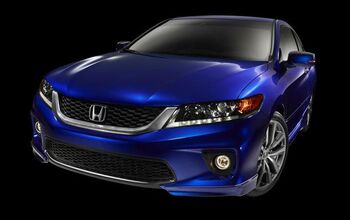

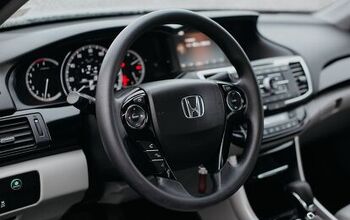
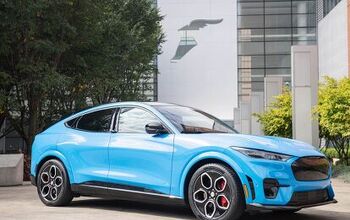
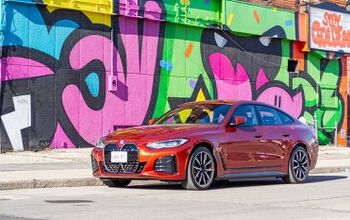

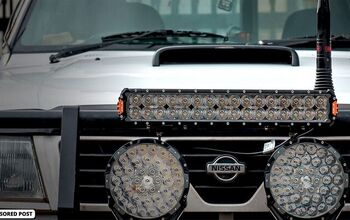

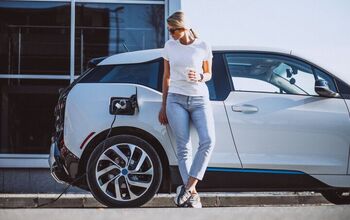
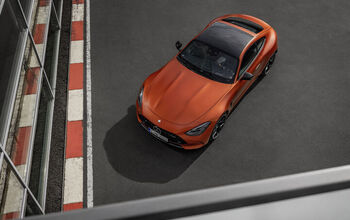



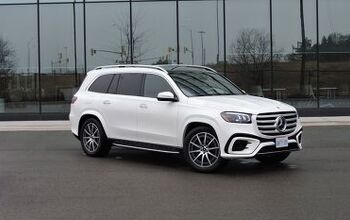
Comments
Join the conversation